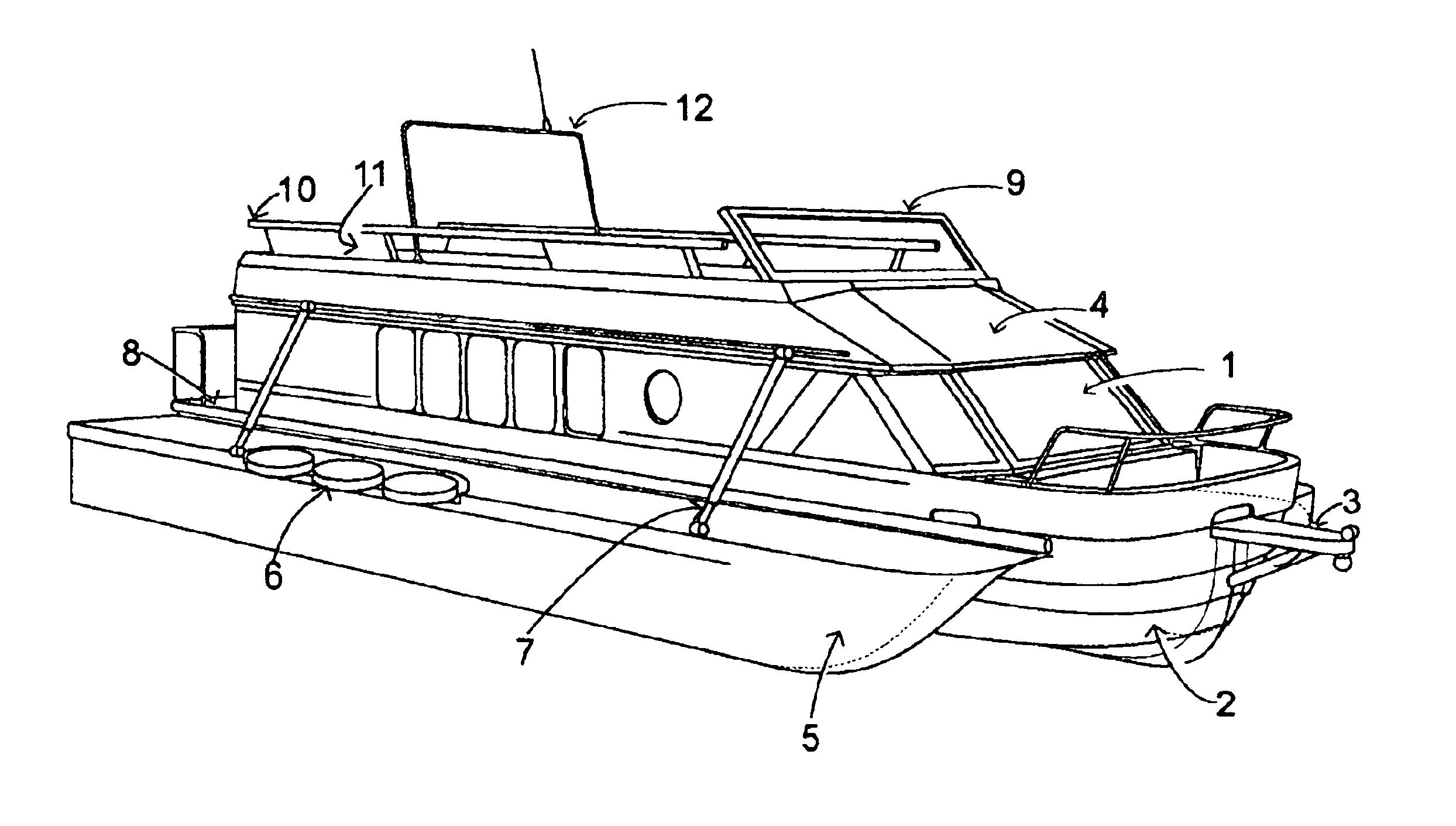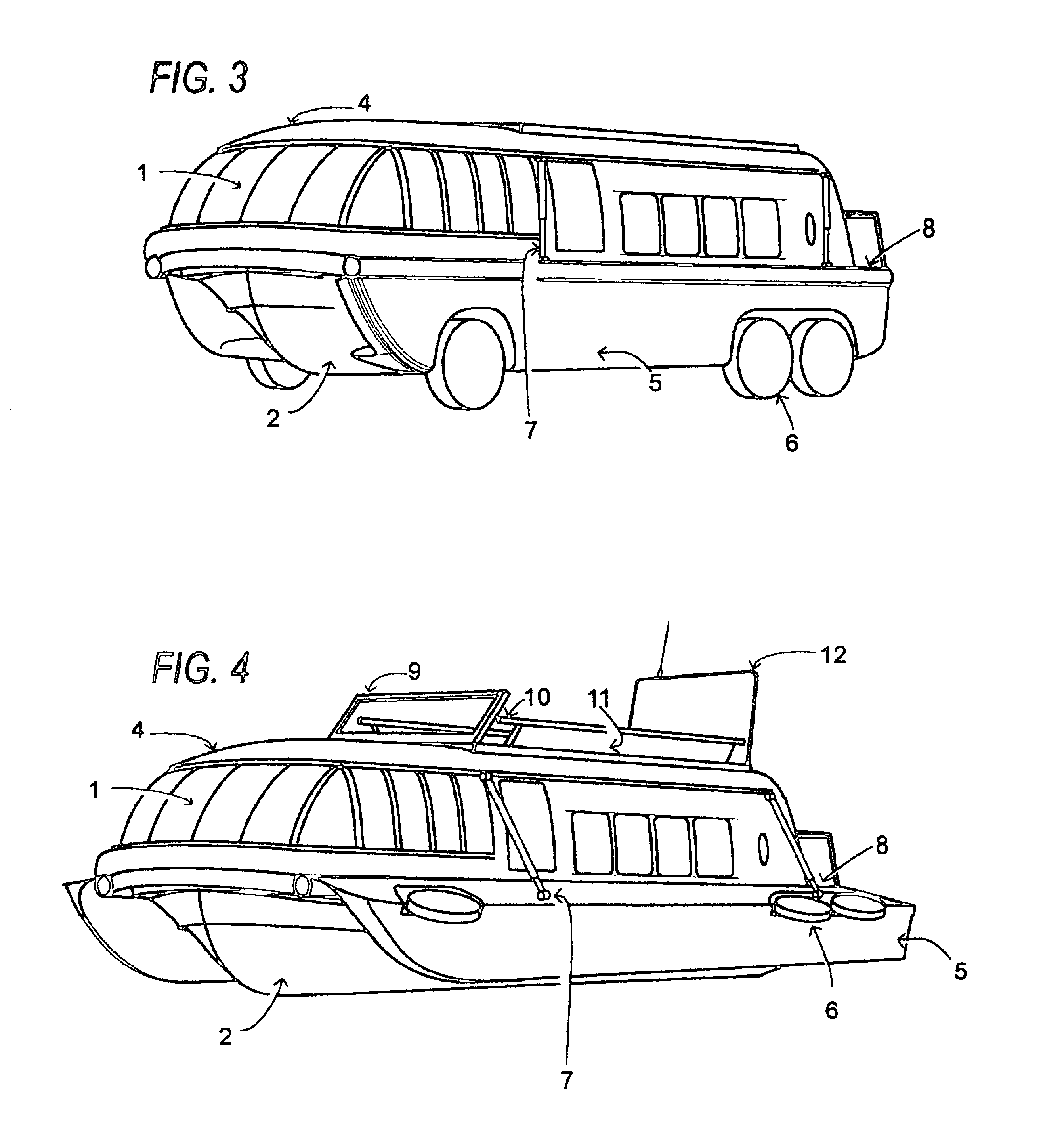Amphibious recreational vehicle
a technology for applied in the direction of marine propulsion, special-purpose vessels, vessel construction, etc., can solve the problems of reducing the safety of amphibious land and watercraft, unable to provide cabin cruiser performance and amenities, and unable to provide safety in normal coastal and offshore ocean conditions. , to achieve the effect of reducing parasite drag and reducing the size of the hull
- Summary
- Abstract
- Description
- Claims
- Application Information
AI Technical Summary
Benefits of technology
Problems solved by technology
Method used
Image
Examples
Embodiment Construction
FIG. 1 shows a perspective view of the embodiment of the invention depicting a representative Amphibious RV travel trailer configured for land use and travel. The Amphibious RV travel trailer is shown consisting of a cabin-body 1, a watertight central hull enclosing the bottom of the cabin-body 2, a tow hitch which doubles as a anchor pulpit 3, a watertight roof with a hidden flying bridge within its profile 4, a retractable outer-hull 5 on each side of the central hull, road wheels 6 within the outer-hulls, an arrangement of outer-hull raising-lowering supports 7, and a rear deck 8 beyond the cabin-body. In this land use configuration, the Amphibious RV functions as any typical travel trailer . . . having a maximum height, width, and length comparable with similar non-amphibious travel trailers.
FIG. 2 is the same perspective view as FIG. 1, with the Amphibious RV travel trailer configured for use on water. In operation, the Amphibious RV travel trailer is backed into the water, and...
PUM
 Login to View More
Login to View More Abstract
Description
Claims
Application Information
 Login to View More
Login to View More - R&D
- Intellectual Property
- Life Sciences
- Materials
- Tech Scout
- Unparalleled Data Quality
- Higher Quality Content
- 60% Fewer Hallucinations
Browse by: Latest US Patents, China's latest patents, Technical Efficacy Thesaurus, Application Domain, Technology Topic, Popular Technical Reports.
© 2025 PatSnap. All rights reserved.Legal|Privacy policy|Modern Slavery Act Transparency Statement|Sitemap|About US| Contact US: help@patsnap.com



